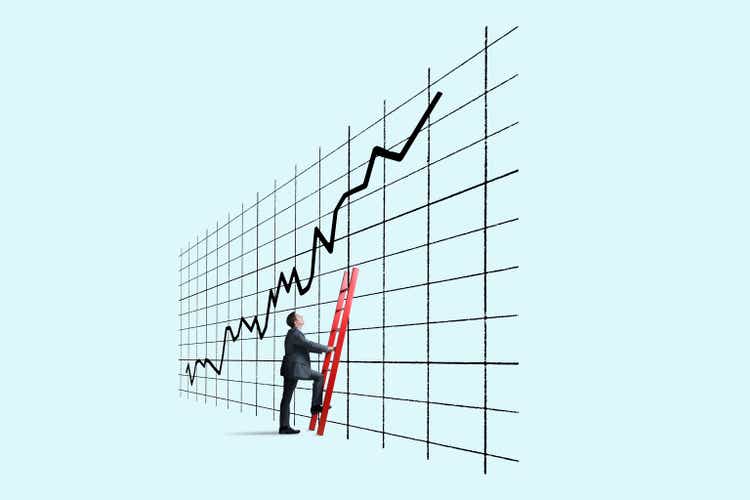DNY59/iStock via Getty Images
FOMO, or "fear of missing out", is a slang term originally created to reference the distress one feels at missing out on experiences and opportunities like nights out with friends. However, as used in investment circles, FOMO is somewhat linked to emotions like impatience or envy can risk causing investors to make hasty and/or decisions.
'FOMO' Meaning
When it comes to investments, the fear of missing out or FOMO can strike when there is a big rally or newly surfaced exciting opportunity that has a lot of buzz. If an investor is feeling anxious or regretful because others are making money on an investment's price movement and they're not, it's a sign of FOMO.
Ultimately, the desire to be part of the bandwagon and make money off the same trading vehicle others are profiting from could result in an investor entering a position at an inopportune time, or without appropriately vetting the idea and risks.
Disadvantages of 'FOMO' Trading
Trading when spurred by feelings of FOMO often doesn't result in a positive return on investment. Just because a security is performing well doesn't mean that it will continue to do so in the future. In fact, many investors lose money by investing in price movements or market trends right before they've run their course.
FOMO often works contrary to the common investment motto of buying low and selling high. Instead, investors may find themselves encouraged to buy when a stock is already high. Since it generates emotional responses, things like fear and impatience often win out over discipline.
FOMO trades can often be riskier trades, not just because investors are buying at a potentially inflated price point, but also because they're often executed on highly hyped investments like meme stocks or cryptocurrencies.
Tip: The longer a stock experiences significant positive price movement the higher the likelihood it will encounter a market reversal or level out. Trades driven by FOMO often end up being unwise trades that could have been avoided with discipline and a strict trading strategy.
'FOMO' Trading Triggers
There are a number of situations that might make investors experience FOMO and buy stocks impulsively.
1. Trading Forums
Trading communities are known to share tips and encourage each other to buy stocks. But just because a number of posters are investing in a particular trade doesn't mean it's right for everyone.
2. News
Is there a stock that's performing particularly well and is in the news? That could cause investors to cherish owning it. However, the stock's rally might have already run its course.
3. Market Volatility
Market volatility can be a great opportunity to make money as there's price movement in all directions. However, it's best to profit from market volatility through the positions one already has rather than trying to pick a security that is moving in one direction with the hope that will continue. Unless an investor understands the reason for the volatility and feels they can predict what might occur, they should often reconsider hastily making these trades during such a tumultuous time.
4. Meme Stocks
Is there a stock that everyone is buying as a joke? An investor might think that they'll make money if they invest in it, but there is a good chance that they could end up losing out on the money they invested.
5. Tips
Whether one follows a trader on Twitter who is always making good trades or reads articles about potential trading opportunities, there can be pressure to act on hot tips.
6. Exciting new business or technology
People can get drawn into the excitement of the latest new thing, be it a product or technology.
How To Overcome 'FOMO'
While FOMO can make an investor want to purchase the security that everyone else seems to be profiting off of, trends in market pricing suggest the opposite of FOMO.
An investor is much better off buying low and selling high, and often is more likely to make money on less popular trades. So, how do traders avoid giving into drawn in by FOMO resulting in bad trades? Here are some suggestions for how to overcome FOMO in stock market trading.
1. Do Research
Before buying a hyped security, do research into its fundamentals, pricing trends, and outlook. Don't buy a security whose price movement isn't supported by the business.
2. Stick to a Trading Strategy
All investors should have a trading strategy that's based on their trading philosophy, risk tolerance, diversification strategies, and broader financial plans. Before investing in a FOMO stock, ensure that these are being followed.
3. Be Ready to Lose
If an investor really wants to invest in a FOMO trade, they should keep their position small and only invest what they can afford to lose.
4. Wait
If an investor feels an urgent need to make an immediate trade because of FOMO, waiting until the next day or next week and doing research might quell the urge to enter a position that might not be in their best interest. If they still want to open a position after waiting and researching, then perhaps that has more merit. However, in many cases the urge to purchase the hyped security was an emotional one and the emotion will have passed.
5. Track Trades
Investors who make FOMO trades should track all their trades in an Excel document so that they can compare the outcomes of trades that they made based on analysis and fundamentals and trades that they made based on FOMO. Reviewing past trades can inform strategy for future trades and could discourage FOMO trades.
Bottom Line
Feeling FOMO is a fact of life. However, succumbing to FOMO in making investing decisions often leads to emotional trades that aren't well researched and could drive significant investment losses. FOMO encourages investors to buy stocks while they're already high - which is often, but not always, a bad investment strategy.